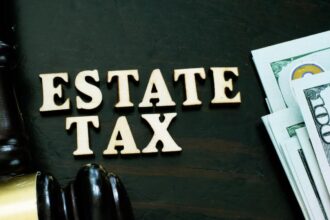The IRS is asking for comments about a new way to save for retirement. The super-charged saver’s match builds on the existing saver’s credit and has been described as “an important opportunity to improve the long-term financial security for millions of low- to moderate-income Americans.” Under the plan, beginning in 2027, qualifying individuals making annual contributions of up to $2,000 to certain retirement plans will be eligible to receive up to $1,000 in a saver’s match contribution from the Treasury each year.
The Saver’s Match is made possible by the SECURE 2.0 Act of 2022.
Background
SECURE 2.0 Act is a follow-up to 2019’s retirement-heavy legislation, the SECURE Act. President Biden signed the SECURE 2.0 Act into law on December 29, 2022, as part of the Consolidated Appropriations Act of 2023. SECURE 2.0 Act made several changes to existing law, including:
- Automatic Enrollment. Beginning in 2025, employers who start new retirement plans after December 29, 2022, will be required to automatically enroll eligible employees in their retirement plan—exceptions exist for small companies with ten or fewer employees, new companies, or church and government agencies. However, employees don’t have to participate and may opt out.
- Roth Account Matches. Employers can amend their existing plans to allow employees to receive vested matching contributions to Roth accounts—this is a change from when matching was only on a pre-tax basis.
- RMDs. SECURE 2.0 made several changes to RMDs (required minimum distributions). Some of the changes were confusing—and the IRS has been rolling out guidance. Last year, Notice 2022-53 noted that final RMD regulations will apply no earlier than the 2023 distribution calendar year. Notice 2023-54 added another year of relief by excusing 2023 missed RMDs for non-eligible designated beneficiaries of IRA owners who died in 2020 or 2021 after the required beginning date. And, not to be outdone, Notice 2024-35 added yet another year of relief (you can read more here).
- Qualified Charitable Distributions. Before the SECURE Act and SECURE 2.0, individuals aged 70½ or older could donate $100,000 annually to qualifying charities from their IRA—the contribution can count towards the taxpayer’s required RMD. As of 2023, that amount is indexed for inflation. Additionally, taxpayers who are 70½ or older can now make a one-time election of up to $50,000—indexed for inflation—from their IRA to a split-interest entity like a charitable remainder unitrust.
- 529 Plans. Beginning this year (2024), you can roll any unused 529 plan funds into a Roth IRA without a penalty.
- Student Loans. And, importantly, section 110 of the SECURE 2.0 Act allows employers to make matching contributions on account of employees’ qualified student loan payments (QSLPs) under section 401(k) plans, section 403(b) plans, SIMPLE IRA plans, and governmental section 457(b) plans.
Existing Law
Under existing law, the saver’s credit is a nonrefundable tax credit worth up to $1,000 ($2,000 for married taxpayers filing jointly) for mid- and low-income taxpayers who contribute to a retirement account.
Eligible taxpayers are those age 18 or older who are not full-time students and are not claimed as a dependent on another person’s tax return. Income limits apply—for 2024, your adjusted gross income (AGI) cannot exceed $38,250 ($76,550 for married taxpayers filing jointly and $57,375 for taxpayers who file as head of household).
New Law
Under SECURE 2.0, beginning in taxable years after December 31, 2026 (so, 2027), the saver’s credit will be replaced by the saver’s match contributions. Eligibility remains income-dependent, and eligible taxpayers are still defined as those aged 18 or older who are not full-time students and are not claimed as dependent on another person’s tax return.
Under section 6433 of the tax code, eligible individuals can claim a saver’s match contribution of up to $1,000 per person (up to $2,000 per married taxpayers filing jointly). The match is figured by multiplying retirement account contributions of up to $2,000 at a rate dependent on income.
The saver’s match contribution is subject to an income phaseout for single taxpayers with AGI of $20,500 (phasing out entirely at $35,500 ) and AGI of $41,000 for married taxpayers filing jointly (phasing out entirely at $71,000). The phaseout amounts are indexed for inflation.
Qualified retirement savings contributions include those made to traditional and Roth individual retirement accounts and annuities (IRAs), elective deferrals, and voluntary after-tax contributions to a section 401(k), 403(b) plan, or 457(b) plan, a SIMPLE IRA, a Simplified Employee Pension (SEP) plan, and contributions to a section 501(c)(18) plan. The contribution will generally not count towards retirement plan and IRA limitations.
The $2,000 cap on contributions for the credit is indexed for inflation. The cap on the match is a maximum match rate of 50% of contributions—or $1,000.
The match amount is to be deposited directly into a taxpayer’s retirement account. Under section 6433(e)(2), that must be a traditional (non-Roth) IRA or the non-Roth portion of a section 401(k) plan, 403(b) plan, or 457(b) plan for the benefit of an eligible individual). If the amount of the match is less than $100, an eligible taxpayer can elect to treat the amount as a refundable income tax credit instead of a contribution to the retirement account.
Request for Comment
As you can imagine, this new arrangement raises a lot of questions. The IRS is seeking comment on a number of issues, including:
- What practical considerations should the IRS take into account in guidance regarding eligibility?
- What considerations should the IRS consider regarding the method by which an eligible individual must claim saver’s match contributions?
- Should eligible individuals be required to file Form 1040 to claim a saver’s match contribution, or should a standalone form be used?
- What should the default election be if an eligible individual claims a saver’s match contribution amount of less than $100 but fails to elect an applicable retirement savings vehicle to receive the saver’s match contribution?
- How should eligible individuals designate a retirement plan as an applicable retirement savings vehicle to receive saver’s match contributions?
- What steps could be taken to ensure that a saver’s match contribution is correctly made to an eligible individual’s applicable retirement savings vehicle?
- What considerations should the IRS consider regarding the treatment of erroneous saver’s match contributions?
- What information should be required to be available to assist eligible individuals in determining whether a particular IRA or retirement plan will accept saver’s match contributions, and where should that information be located?
You can find all of the questions and additional background in Notice 2024-65.
The IRS wants to hear from you. Comments are requested from all stakeholders, including low—to moderate-income taxpayers, volunteer and for-profit tax preparers, organizations that serve and advise low—to moderate-income taxpayers, IRA custodians and trustees, retirement plan administrators, recordkeepers, and plan sponsors.
Written comments should be submitted on or before November 4, 2024, either at www.regulations.gov or by mailing the comments to Internal Revenue Service, CC:PA:01:PR (Notice 2024-65), Room 5203, P.O. Box 7604, Ben Franklin Station, Washington, DC 20044.
Read the full article here










